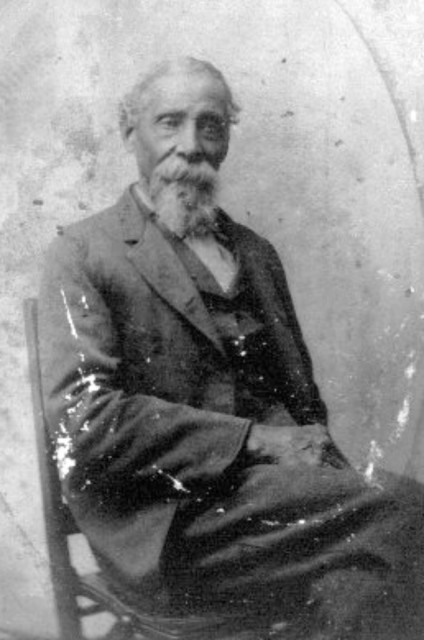
Lyman Epps. Source: SUNY Plattsburgh Photo Galleries.
In the 19th century, the North Country was a hotbed of progressive attitudes towards racial equality. In the decades leading up to the Civil War, the Adirondacks provided an escape for enslaved African Americans en route to freedom in Canada. With several abolitionist Quaker communities, proximity to other abolitionist communities in Vermont, and a remote location close to Canada accessed easily by canals and Lake Champlain, the region was an important branch of New York’s Underground Railroad. However, since aiding fugitive slaves was illegal and the Underground Railroad was therefore a secretive enterprise, the traces of its routes through the North Country are limited. In Essex county, which lies across Lake Champlain from Middlebury, there were large anti-slavery societies in towns including Jay, Moriah, Ticonderoga, and Crown Point, with possible Underground Railroad stops in these areas as well as in Elizabethtown, Keene, Wilmington, and North Elba. [ref] Calarco, The Underground Railroad in the Adirondack Region. [/ref]
The Adirondacks also became an important refuge in 1846 for 3,000 free African-American settlers who made their way north to pursue new lives in the High Peaks region in communities including Timbuctoo, Blacksville, and Freeman’s Home. “These black settlers were the initial wave of a social experiment meant to destroy both slavery and, more generally, racism throughout the entire United States through the redemptive practice of a utopian agrarianism.” [ref] Miller, “At Home in the Great Northern Wilderness.” [/ref] When Gerrit Smith, a wealthy landowner in New York, became involved in abolition movements in the 1840s, he decided to sell $1 deeds for forty-acre plots of land of his 120,000 inherited acres in the North Country to black pioneers who were not permitted to vote under New York state law without owning $250 in property. For them, the Adirondack wilderness represented a place of opportunity where they could cultivate the land and their independence. One settler named John Thomas wrote to Smith that owning and cultivating the land changed him: “‘I have breasted the storm of prejudice and opposition, until I begin to be regarded as an American Citizen.’” [ref] Ibid. [/ref]
In 1849, the abolitionist John Brown established a farm near Timbuctoo, a few miles from today’s village of Lake Placid. Inspired to “support the black families moving to Smith’s lands,” he moved to the site in 1855 where he soon began to plan for “a raid on southern slaveholders, assembling weapons and other supplies at the farm.” [ref] Warren, “The Last Days of John Brown.” [/ref] Consulting with his neighbors in the community played a major role in his decisions to take up arms that year in Kansas and, in 1859, at Harpers Ferry, Virginia. [ref] Ibid. [/ref] There, he raided a federal armory while trying to incite a slave revolt, and was tried and executed for murder and treason. His words on the day of his execution foreshadowed the Civil War when he said “I, John Brown, am now quite certain that the crimes of this guilty land will never be purged away but with blood.” [ref] National Park Service, “John Brown’s Raid.” [/ref] While some have considered him a terrorist, others have praised his resistance against the atrocities of slavery. Undeniably, his actions played a major role in the years that followed his death that ultimately led to emancipation. His grave remains on his farm today in North Elba, where it is protected as a State Historic Site. [ref] New York State Parks, Recreation and Historic Preservation, “John Brown Farm State Historic Site.” [/ref]